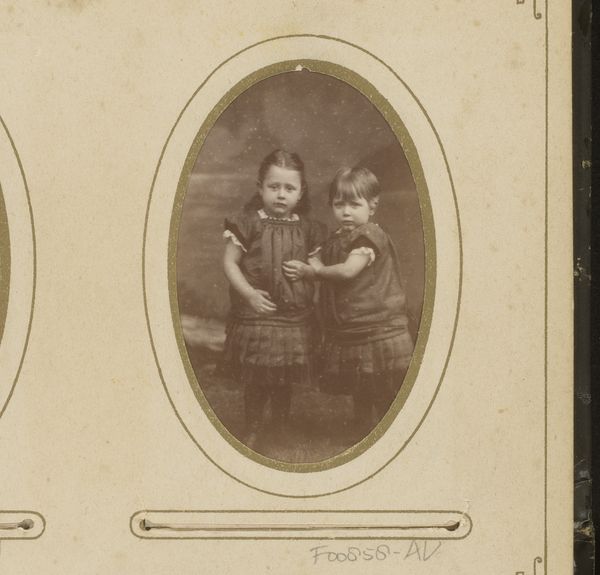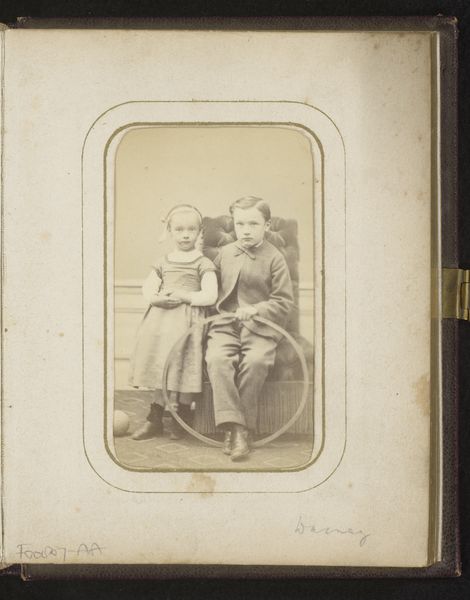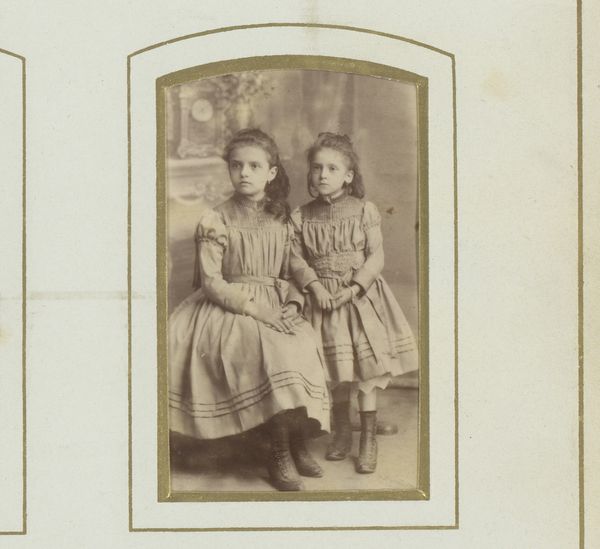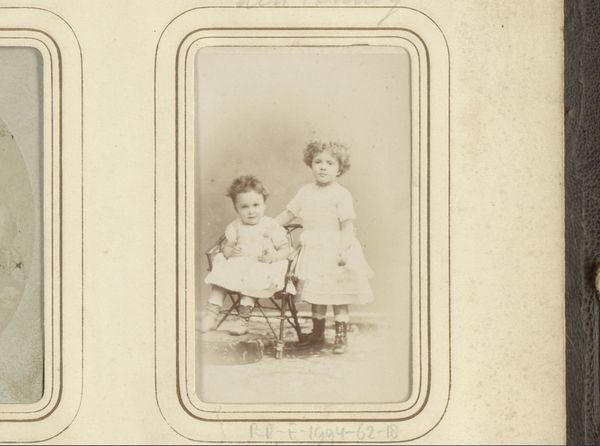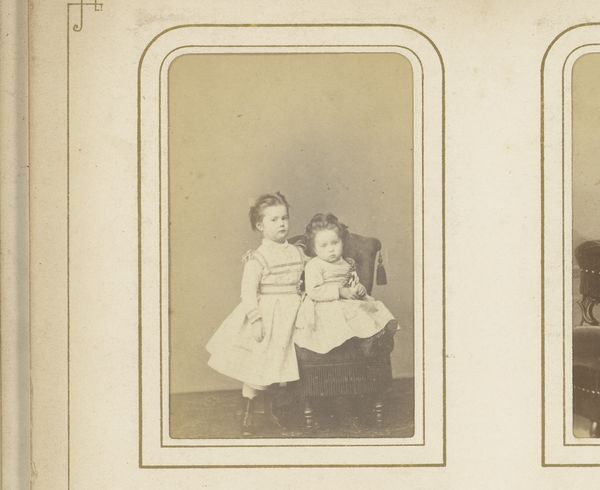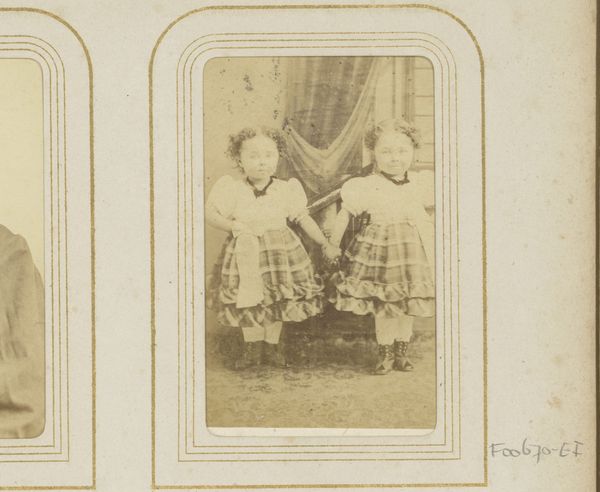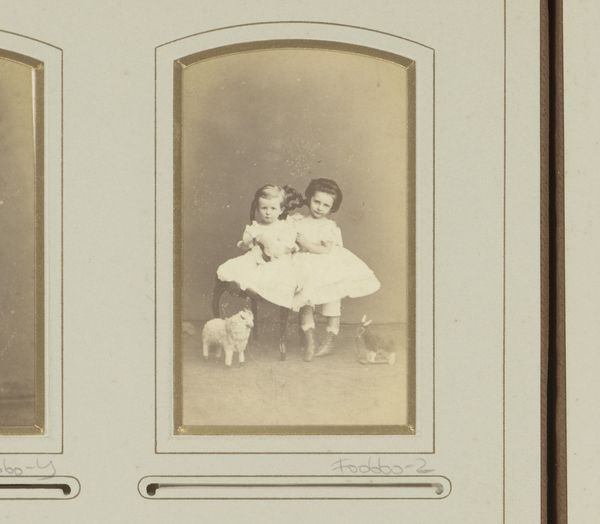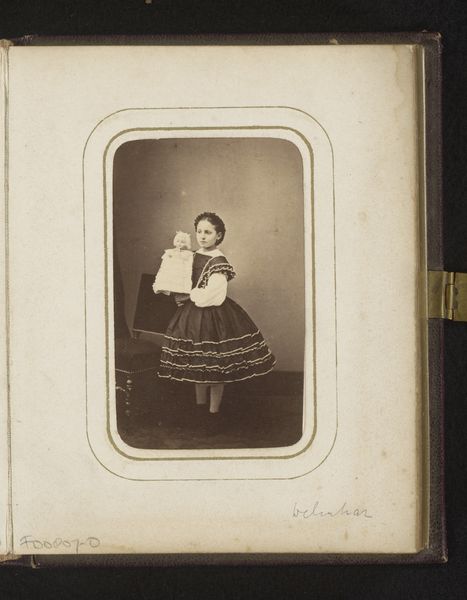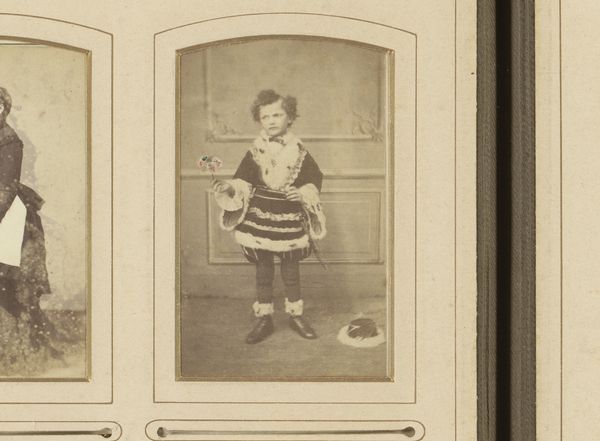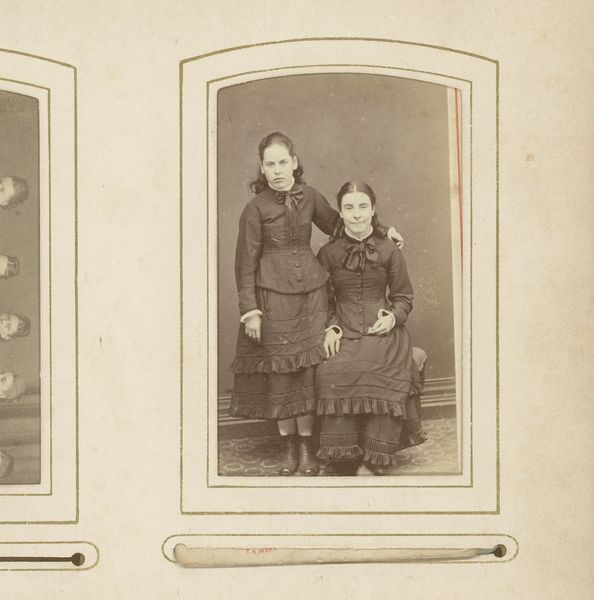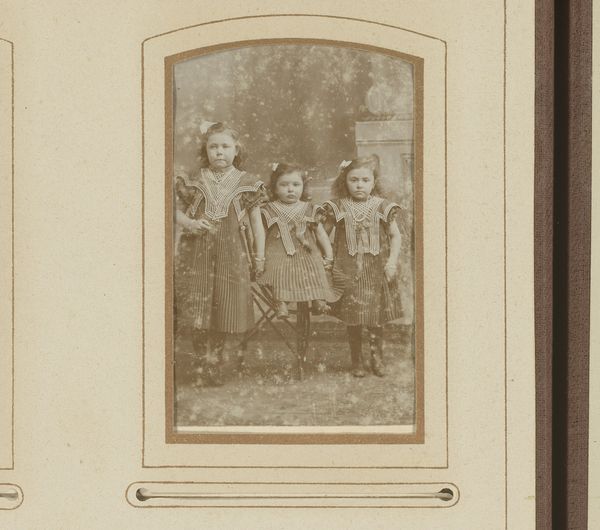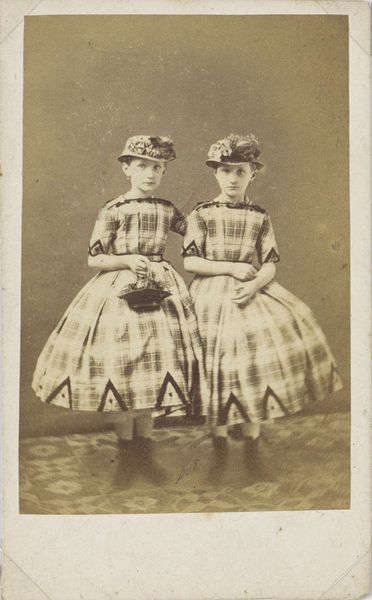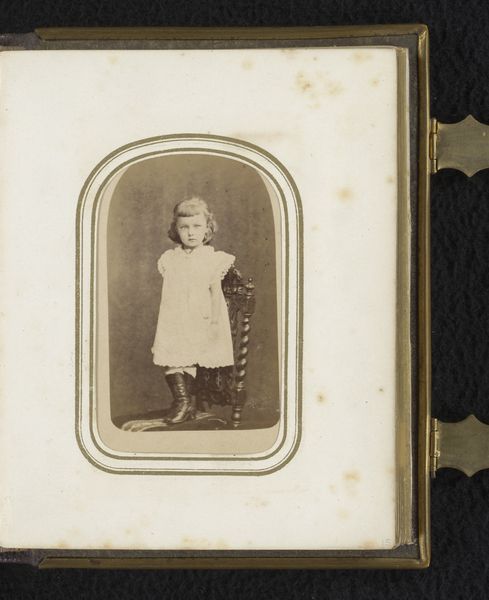
photography
#
portrait
#
photography
#
19th century
Dimensions: height 83 mm, width 51 mm
Copyright: Rijks Museum: Open Domain
Curator: This 19th-century photograph, found here at the Rijksmuseum, is called "Portret van twee meisjes met hoeden en bloemen," or, "Portrait of two girls with hats and flowers." Editor: There's a palpable stillness. A sort of melancholy elegance radiates from these young figures, it almost feels ghostly to me. Curator: Perhaps because these photographic portraits from around 1850 to 1896 weren't spontaneous, of course. Can you imagine how long they had to stand perfectly still? Editor: It's almost confrontational, isn’t it? These two children, locked into a rigid expectation, embodying a whole construct of imposed innocence and decorum. Curator: Look at their identical outfits, even their expressions seem mirrored. You almost want to scream, "Be yourselves!" It makes you wonder about the lack of individual identity of the woman in this patriarchal era. Editor: Exactly. The symmetry feels incredibly deliberate. But even in these constrained conditions, the subtle differences become intriguing. See how one clutches her flowers a bit tighter than the other? It could suggest a rebellion to all these rigid constraints of gender and identity. Curator: Or simply one girl liked holding flowers more than the other? Maybe it is our modern tendency to find feminist discourse in any tiny discrepancy from centuries ago! It's a tender portrait, to be sure. The details, like the lace on their dresses, are captivating. Editor: I'm curious to what degree did those "details" serve a system of power dynamics, creating social distance based on economic status or class distinctions? This portrait serves not only as a beautiful example of nineteenth-century photography but also as an invitation to challenge accepted beliefs about gender roles, power relations, and class structure within society at that time. Curator: Very true. It also serves as a little window, into a world so seemingly prim, yet likely as complex and contradictory as our own. Editor: Indeed, it is those nuances and tensions that makes us re-think what constitutes personhood, what freedom feels like and how identity is cultivated at every stage of one's life.
Comments
No comments
Be the first to comment and join the conversation on the ultimate creative platform.
